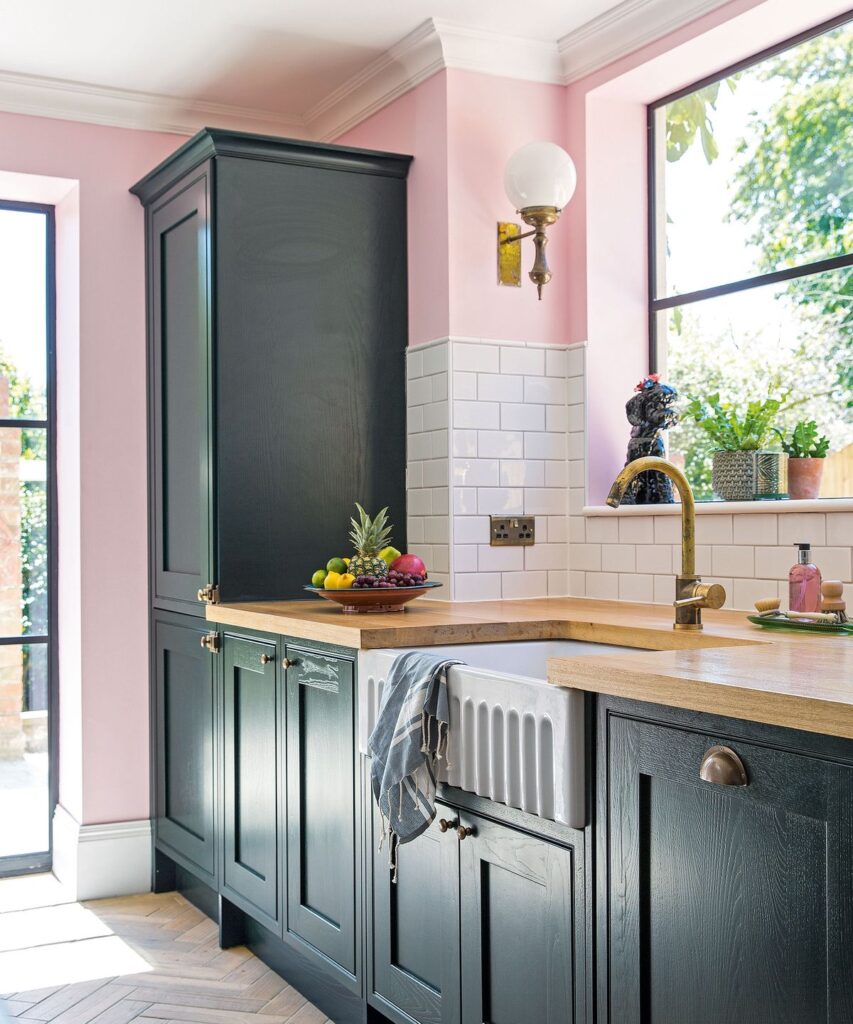Wooden kitchen worktops are a fast way to achieve a cosy farmhouse-inspired look, but are they a practical choice? Your kitchen worktops will take up a lot of visual space in your design, so choosing a material you like the look of is important, but it also needs to be functional for everyday life.
Wooden kitchen worktop ideas are ideal for adding to a traditional kitchen, but you’ll want to make sure they’re also the right choice for your home and lifestyle. After all a kitchen is a big investment, so choosing a work surface that will stand the test of time will be key.
Are wooden worktops good for your kitchen?
‘Wooden worktops can actually be good for kitchens, as they have several advantages. If they are cared for properly, a wooden worktop can be extremely durable and last for a long time, and the strength of the wood means it can stand up to everyday wear and tear,’ explains Tim Warren, a DIY expert from Adkwik.
Not only are they durable and long-lasting but they’re also a great way to soften a design. If you have more contemporary cabinetry or have opted for a lot of hard stone surfaces elsewhere in your design, then wood worktops will add a more lived-in look. A kitchen is where the whole family likely gathers to cook, dine and catch-up and this ethos starts with your chosen design – opting for homely design touches will have a big impact.
‘Wooden worktops are also hygienic despite popular belief, provided that the wood is properly maintained its antimicrobial properties will help to prevent the growth of bacteria. Additionally, a wooden worktop can be repaired easily, as scratches or other marks can be sanded down and then refinished to restore the original appearance of the wood, as opposed to other materials like laminate or stone. Wood is heat resistant to a point, and it can handle hot plates being placed on it, but you should avoid the surface coming into contact with anything that is scorching hot to prevent burning,’ Tim continues.
‘However, wooden worktops are more vulnerable to water damage than other kinds of kitchen worktops. If the wood is not properly sealed, water can seep into the wood and change the colour or make it more vulnerable to bacteria growth.’
What are the different types of wooden worktops?
When it comes to choosing a wooden worktop, there are many different types with varying grain patterns. Oak is one of the most common choices for a kitchen as it has a warm, mid-toned appearance that will suit the majority of designs.
Meanwhile, if you want to create a more dramatic scheme then walnut is a great choice. It’s robust and will add plenty of allure to a design.
There are also lighter wooden worktops to choose from if you want to create a Scandi-inspired scheme. You’ll need to be careful of spillages but ash will be a light and bright choice.
How to maintain wooden worktops in a kitchen
While wooden worktops are a durable choice for a cooking space, they will require regular maintenance to keep the wood supple and beautiful, and to ensure your investment lasts.
‘Unlike some of the other man-made materials out there, wood requires bi-annual maintenance with oil products – this will prevent rotting and discolouration. Clean with a soft cloth and warm water after every use, and make sure trivets are placed down to avoid splitting or warping,’ explains Jen Nash, head of design at Magnet.
Tim adds that, ‘Any spillages on a wooden worktop should be cleaned up immediately, and do not allow liquids to pool or stand on the surface for prolonged periods. Do not cut directly onto a wooden worktop, instead place a cutting board between the item you are cutting and the worktop to maintain its appearance. Using a cutting board can also prevent staining from strongly pigmented foods.’
When it comes to caring for wooden worktops, Tim adds ‘you should only ever use a mild detergent and a soft, lint free cloth to clean wooden worktops. Do not use abrasive cleaners or strong chemicals.’
Make sure to oil wooden worktops regularly, too. This will seal the wood so that it’s protected. If left unsealed, wood is porous and will be susceptible to water damage and bacteria growth, which will rot the worktop over time. The general rule is to oil it at least twice a year when wood looks dull and dry, but you can do it as and when needed.
Will wooden worktops be your choice for your new kitchen design?
Read the full article here

